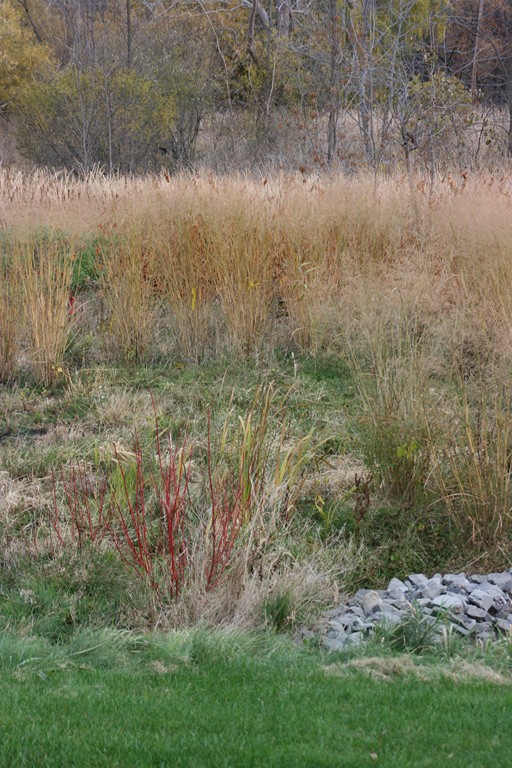Let It Rain

If you spend as much time as I do reading the myriad journals available to the landscape trades, you’ll no doubt have noticed their intense concentration on water quality and preservation. It’s about time these issues came to the fore: We’ve spent so much time as a society focusing on making our lives easier that many of us seem to have forgotten that water is a finite resource.
Rest assured: I’m not somebody who believes that environmentalism is all about undermining the desire for beauty or luxury. Nonetheless and now more than ever before, it is apparent that we must find ways to manage, preserve and marshal dwindling water resources while at the same time we must continue to offer our clients spaces in which they can gather to enjoy beauty, tranquility or recreation.
The hard fact is, only about three percent of the water on this planet can be categorized as “fresh” – and only about one percent of that global total may further be characterized as “potable,” with much of that fraction dedicated to irrigating fields, washing cars and flushing toilets.
In other words, despite growing scarcity, humans have been cavalier with water and have put it at risk in many places. Take the Great Lakes as one example: For far too long, these immense bodies of fresh water have been taken for granted as catchments for industrial waste, human sewage, agricultural runoff and the flow of contaminated rainwater.
Although the water in these lakes is still classified as fresh, it is now something far from potable.
CLEAR EXAMPLES
There are many such instances in which our activities are compromising ecosystems and putting potable-water supplies at risk. Simply as a matter of coping with the planet’s increasing human population, it has become more crucial than ever to work toward preserving and treating fresh water in such a way that its potable percentage will increase.
In some cases, that might mean environmental regulations aimed at controlling or banning industrial and agricultural discharges or reducing runoff from developed areas. In others, it might mean raising awareness among consumers and encouraging them to conserve in practical ways. And for us in the watershaping and landscape-related industries, it likely means learning more about how water works in nature and developing systems that aggressively conserve it.
The good news is, we’re already on the way when it comes to using nature to find solutions. The use of bogs and bio-filtration systems in conjunction with ponds and streams is a common and familiar example, as is the growing use of artificial floating islands. In these cases, plants are used to absorb chemical compounds that render water harmful for human contact or consumption.
Another approach – simple and extremely effective – involves development of “rain gardens” or “constructed wetlands.” (As I see it, the latter is the more descriptive term, basically because rain garden suggests simple diversion of rainwater to planting beds around a house: While such systems can be quite effective, the term constructed wetlands encompasses the larger-scale systems that can have a far grander influence on local ecologies. For clarity’s sake, we’ll focus here on these larger installations.)
| Water enters the constructed wetland via a 12-inch pipe that drops it into a sediment basin built of rip-rap that removes large debris from the water. A French drain system below the plantings carries water not absorbed by the plants or percolated into the ground to a catch basin at the opposite end; this basin discharges into the Thousand Acre Swamp. |
The general concept of a constructed wetland involves diverting water that would otherwise flow directly into storm drains to open areas filled with native plantings and underlying French drains that allow the collected water to percolate into the soil. In simple terms, this takes up water that would ordinarily run to waste and thereby reduces the volume of contaminated runoff that might find its way into natural bodies of water. At the same time, this water can be used to sustain beautiful planted areas.
In many cities, these wetland systems can relieve pressure on municipal treatment facilities that can be overwhelmed by the flows from major storms and end up dumping raw sewage into the water supply. By lowering the volume of water flowing into municipal systems, constructed wetlands do a fantastic and invaluable job of helping cities avoid these disgusting incidents.
Yet despite the simplicity of this concept, it actually seems to complicate things for engineers and developers who simply can’t believe that systems so easy to design and build can actually have such a positive influence on a site and even reduce their costs. It’s a classic case of traditional stubbornness: “This is the way we’ve always done it, so why should we change now?”
This sort of resistance has had the effect of turning me into a crusader for these systems among both my residential and commercial clients: I’ve seen constructed wetlands work so efficiently for so many years that I simply cannot avoid being their strong advocate whenever the opportunity arises.
MAKING THE CASE
As landscape consultant to the Town of Penfield, I’ve been persistent in my campaign and spend a good bit of time redesigning site plans to eliminate projects’ storm-sewer connections and run the water to constructed wetlands (or to simple rain gardens in the case of smaller buildings). The engineers invariably respond by ignoring my comments, and they typically get what they want from review committees.
Even though my success rate is low so far, I know I’m raising the local awareness level with respect to these issues, and I must say that I’m drawing sustenance from a growing general awareness of environmental issues. My argument is simple: It’s not, I say, a matter of being a tree hugger or naïve environmentalist; rather, it’s about dollars and cents and the fact that using constructed wetlands to clean water that would otherwise be sent into storm drains or sewers makes enormous practical sense because the systems are inexpensive, tremendously effective and can be beautiful – a classic win-win-win proposition.
In one recent triumph, I collaborated with Geoff Benway, the Town of Penfield’s head engineer: Together, we designed an extreme test case for a site where the Sewer Department was planning to build a new facility right next to the Highway Department’s headquarters.
The department’s existing facility covers about five acres and includes a large parking garage for the municipality’s trucks and heavy equipment; a huge barn for the storage of snow-melting salt; and a large asphalt area for employee parking. As developed, all runoff flows to storm sewers, taking any debris with it (including large volumes of salt) – something of a disaster, as I now see it.
With a new facility in the works to house additional trucks, cars and equipment, I saw the potential for even more pollution running into the storm sewers. And there was another issue: This new facility was to rise directly adjacent to Thousand Acre Swamp, a large, protected wetland through which much of this new, contaminated flow would pass on its way to the town’s stormwater-collection system. (As a point of interest, this wetland is part of a tract donated to the town by the renowned landscape architect Fletcher Steele.)
Working with Benway, I designed a quarter-acre wetland right next to the new building to handle runoff from the site’s total impervious area of about three acres. All catch basins and rooftop downspouts flow to a twelve-inch pipe that empties into one end of the space, where we placed a sediment basin to capture any debris (small stones, dirt, leaves, paper and other debris).
| Once the site was brought to grade and made ready for planting, the perimeter was hydroseeded with a perennial ryegrass mix for quick germination and low maintenance (that is, once-a-year mowing). We then planted using mostly bare-root shrubs, perennials and grasses – and within a year, most of the plants had taken hold quite nicely. The switch grass was particularly vigorous, growing to almost full size from two-inch cell plants. |
In storm situations, the quarter-acre space can contain and control about six inches of water. Beneath the garden, we set up a series of French drains running in parallel. These connect to a lateral pipe that empties into a below-grade catch basin located opposite the sediment basin. This catch basin is positioned at a level six inches higher than the inflow, so it carries away any water rising above this level.
Our expectation is that any water flowing into the garden will gradually percolate down into the soil toward the drain system and will be cleaned as it passes through the roots of the plants. Any water issuing from the drainage system will, in other words, have been cleared of its pollutants and can be allowed to pass harmlessly into the swamp.
THE GREEN THING
The key to such a system is letting the water flow slowly though the surface mulch and the plants’ roots. Both are important: The mulch removes heavy metals from water running through it, while the plants’ roots remove other pollutants including oils, salts and other contaminants. These wetlands don’t have to be perfect to be effective, because any water leaving these areas is cleaner than when it entered.
Plant selection is extremely critical in any constructed wetland, basically because the selected species must be able to tolerate long periods of drought alternating with periods of inundation. Native species usually work best, so I visit local natural wetlands to find ideas and see which combinations of shrubs, trees, perennials and grasses will work best.
Another key point has to do with aesthetics: Far from being simple depressions filled with random plantings, these spaces can be design elements all their own. The Penfield Sewer Department’s new facility, for example, is arranged as an abstract painting, with wide swaths of red twig dogwoods, grasses and perennials (including flowering lobelias and New England asters) creating dramatic sweeps of color.
Penfield has joined the fray by making the garden an educational facility, with signage and occasional presentations offered at its edges. This coming year, with the plants beginning to reach acceptable size, we will contact local universities and invite them to conduct tests to determine differences in water quality at the inflow basin and at the outflow point.
Armed with this kind of information, we will be able to demonstrate to local developers that what we’re after will save them money by helping them avoid connections to storm drains (less piping, less trenching, less labor) and will also make them seem like good neighbors who value water quality.
From my standpoint as a watershaper and landscape-design professional, I see constructed wetlands as an opportunity to participate in the management of our most precious natural resource. I also see it as an opportunity to get in on the ground floor in development of commercial and civic properties; raise awareness about the conservation of water; and beautify landscapes for generations to come.
That’s a heady bucket-load of benefits for my profession – one that buoys me in good times and bad.
Bruce Zaretsky is president of Zaretsky and Associates, a landscape design/construction/consultation company in Rochester, N.Y. Nationally recognized for creative and inspiring residential landscapes, he also works with healthcare facilities, nursing homes and local municipalities in conceiving and installing healing and meditation gardens. You can reach him at [email protected].
















